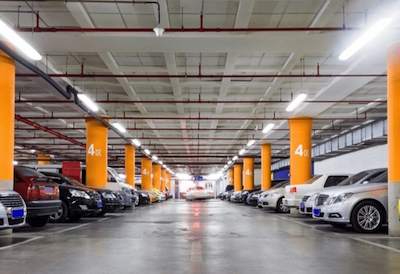Luminaire Dirt Depreciation

Feb 24, 2019
For many years, building managers have been looking for efficient lighting systems that provide minimum maintenance. Indeed, today, several lighting fixtures boast a lifetime of more than 50,000 hours, which significantly reduces the need to replace luminaires and essentially reduces the maintenance of the luminaire itself. LED luminaires are less often cleaned and exposed to the elements for longer periods, thus accumulating more dirt and dust.
This change of habit creates a contradiction: the luminaires actually last longer if their design is adapted to the conditions of the application, but maintenance of the luminaires becomes necessary to eliminate light loss due to accumulated dust over time.
Factors that contribute to loss of light
All lighting systems experience a reduction of lumen over the course of their lifetime due to a number of causes, such as changes in surface properties (lamp, fixture or the room’s purpose, if applicable).
Several factors can influence the decline of light, and some of these can be corrected, whereas others may not be. The following is an incomplete list published by the Illuminating Engineering Society of North America (IES)

To learn more about limiting light loss (or optical loss), check out our blog post on the topic, “How to limit optical loss”
Loss of light due to accumulated dust
In the past, we cleaned a fixture when it came time to change a light bulb. Today, thanks to LED technology, it can take many years (between 5 and 10 years in the industrial or commercial sectors) to carry out maintenance on these luminaires. However, we face a new problem: potential accumulation of dust on the fixture, which causes a reduction in the brightness level.
LED fixtures are designed to reduce maintenance requirements, but some designs may accumulate more dust than others, which may call for more frequent cleaning. Therefore, it is important to consider the design when choosing a luminaire.
Indeed, fixtures often have pockets, streaks or other embossed designs prone to dust accumulation. This dust may cause a reduction in the light emitted, alter the lighting’s initial design or even damage the luminaire itself.
It is important to clean the fixture frequently to prevent light loss, especially in environments that exude a lot of airborne particles, such as garages, factories or greenhouses. In these environments, dust penetrates the fixture, contaminating the reflector’s interior, the LED transformer, and the lamp itself. Thus, cleaning the outside of your fixture is not enough; you still lose light output due to the accumulation of dust.
Check ambient conditions
Appearing below is a chart that allows you to examine the environment in which is your fixture is situated.

An IP65+ solution
To save on maintenance time, the best solution would be to spray the fixture with a garden hose to avoid dismantling it. However, not all fixtures can support the spray of water jets. Another solution would be to adopt a hermetically sealed lighting system rated IP65 and higher. To learn more about the Protection Index (IP code), see the IP code and find out what it means: www.standardpro.com/ip-code-what-it-means/
This article was first published online by Standard




![Guide to the Canadian Electrical Code, Part 1[i] – A Road Map: Section 52 — Diagnostic imaging installations](https://electricalindustry.ca/wp-content/uploads/2022/11/Guide-CE-Code-2-768x432.png)





![Guide to the Canadian Electrical Code, Part 1[i] – A Road Map: Section 52 — Diagnostic imaging installations](https://electricalindustry.ca/wp-content/uploads/2022/11/Guide-CE-Code-2.png)






